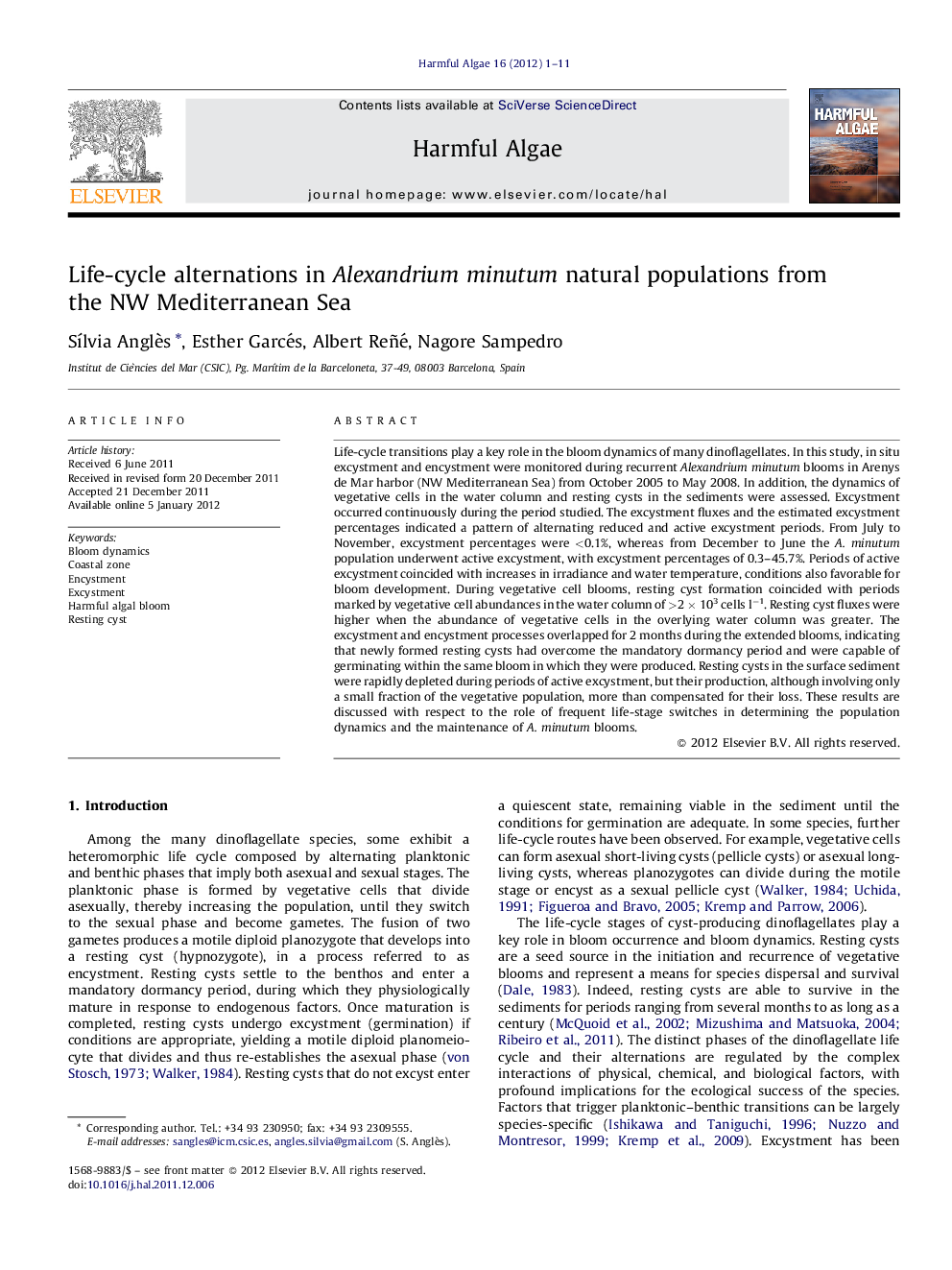| Article ID | Journal | Published Year | Pages | File Type |
|---|---|---|---|---|
| 4545610 | Harmful Algae | 2012 | 11 Pages |
Life-cycle transitions play a key role in the bloom dynamics of many dinoflagellates. In this study, in situ excystment and encystment were monitored during recurrent Alexandrium minutum blooms in Arenys de Mar harbor (NW Mediterranean Sea) from October 2005 to May 2008. In addition, the dynamics of vegetative cells in the water column and resting cysts in the sediments were assessed. Excystment occurred continuously during the period studied. The excystment fluxes and the estimated excystment percentages indicated a pattern of alternating reduced and active excystment periods. From July to November, excystment percentages were <0.1%, whereas from December to June the A. minutum population underwent active excystment, with excystment percentages of 0.3–45.7%. Periods of active excystment coincided with increases in irradiance and water temperature, conditions also favorable for bloom development. During vegetative cell blooms, resting cyst formation coincided with periods marked by vegetative cell abundances in the water column of >2 × 103 cells l−1. Resting cyst fluxes were higher when the abundance of vegetative cells in the overlying water column was greater. The excystment and encystment processes overlapped for 2 months during the extended blooms, indicating that newly formed resting cysts had overcome the mandatory dormancy period and were capable of germinating within the same bloom in which they were produced. Resting cysts in the surface sediment were rapidly depleted during periods of active excystment, but their production, although involving only a small fraction of the vegetative population, more than compensated for their loss. These results are discussed with respect to the role of frequent life-stage switches in determining the population dynamics and the maintenance of A. minutum blooms.
► We provide new insights into Alexandrium minutum in situ life-cycle transitions. ► Continuous germination pattern with active excystment periods. ► Resting cyst flux variability explained by vegetative cell abundance. ► Excystment and encystment processes overlapped during bloom development. ► Frequent life-stage transitions determine population dynamics and bloom maintenance.
